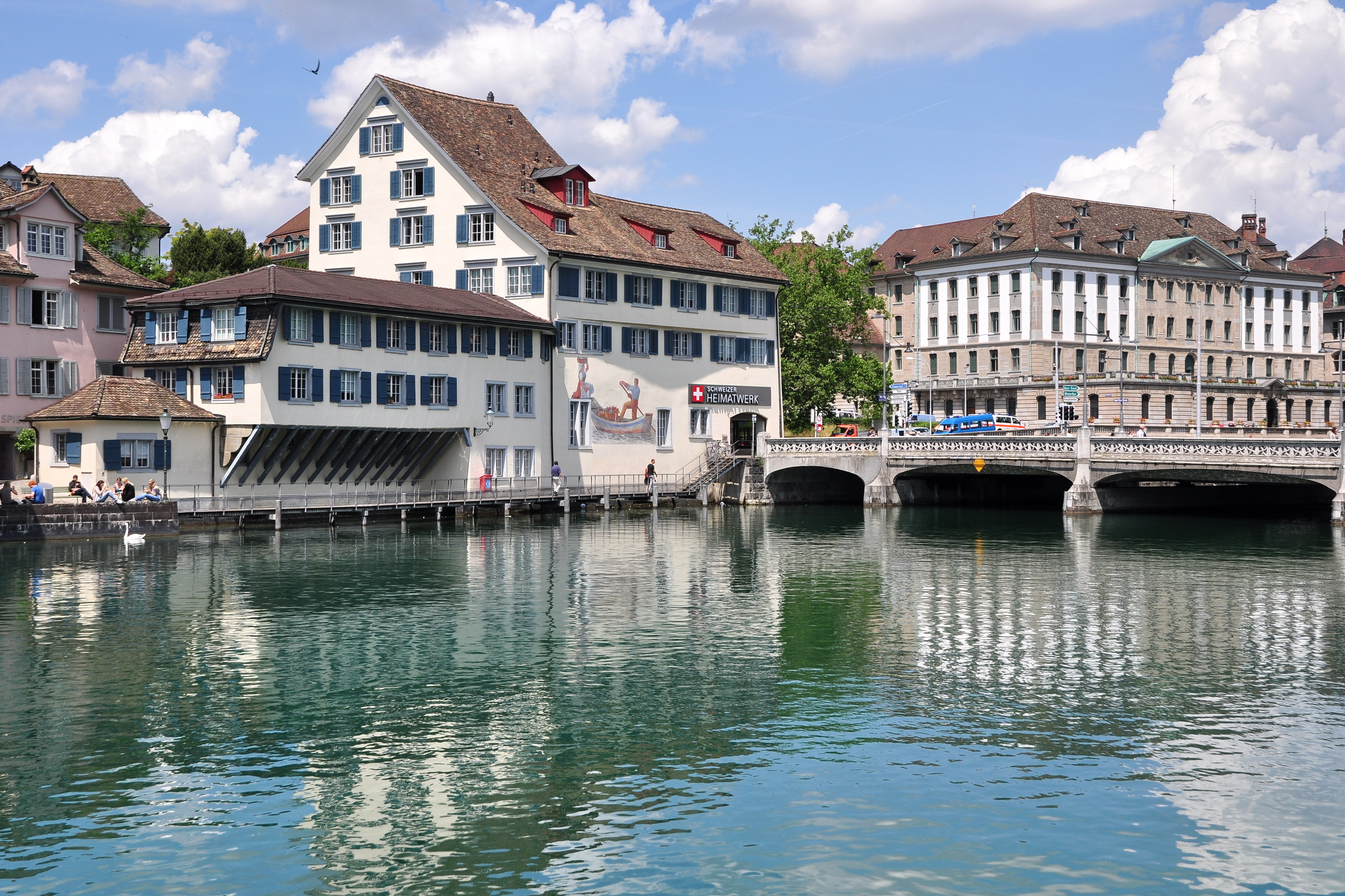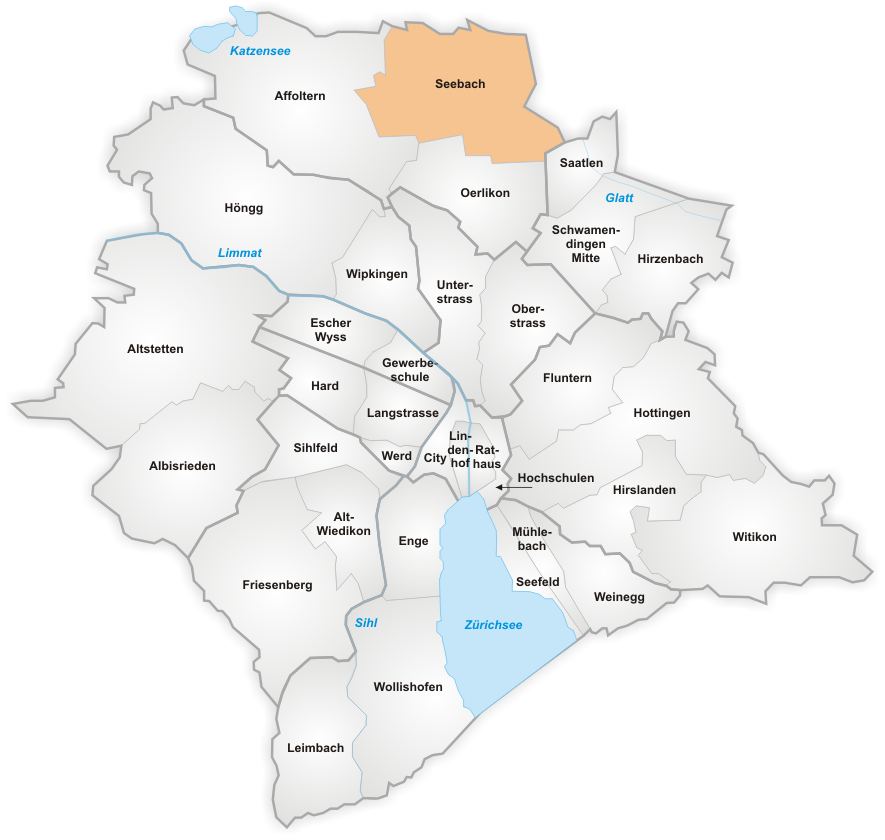|
Central, Zürich
Central is a public square or ''plaza'' at the northern end of Limmatquai in Zürich, Switzerland. It is one of the city's nodal points for road and public transportation. It was formerly known as Leonhardplatz or Leonhardsplatz. Geography Central is in fact outside of the historical core of the medieval town of Zürich, previously the Celtic-Roman ''Turicum''. It is situated at the right-hand (eastern) bank of the Limmat, the principal river flowing through the city of Zürich. It is opposite of the Zürich Hauptbahnhof and connected by Bahnhofbrücke, a road and tramway bridge crossing the Limmat, and connecting ''Rathaus'' and ''Lindenhof'' respectively the ''City'' and ''Unterstrass'' quarters. Situated nearby the historical Neumarkt and Niederdorf, the most remarkable landmark is the Prediger church. The former ''Leonhardplatz'' is named after the ''Central'' hotel situated there. The ''Seilergraben'', ''Weinbergstrasse'', ''Neumühlequai'' and ''Stampfenbachstrasse'' ... [...More Info...] [...Related Items...] OR: [Wikipedia] [Google] [Baidu] |
Lindenhof Hill
The Lindenhof (lit.: ''courtyard of the lime'') is a moraine hill and a public square in the historic center of Zürich, Switzerland. It is the site of the Roman and Carolingian era Kaiserpfalz around which the city has historically grown. The hilltop area—including its prehistoric, Roman, and medieval remains—is listed as a Swiss heritage site of national significance. Topography Lindenhof (its northern part is called ''Sihlbühl'') dominates the Lindenhof quarter in district 1 (Altstadt), the historical center of Zürich's Altstadt. To the North, it ends at ''Uraniastrasse'' (City police station) and to the South, it ends near St. Peter church. In the West, the hill is limited by the Bahnhofstrasse, and in the east, it ends at the Limmat and the Schipfe quarter. Lindenhof sits atop the remains of a glacier. The hill and its public square are part of the Linth Glacier's moraines in the area of Zürich. The now largely flattened Lindenhof (428 m ü. M) rises about 25 met ... [...More Info...] [...Related Items...] OR: [Wikipedia] [Google] [Baidu] |
ETH Zurich
(colloquially) , former_name = eidgenössische polytechnische Schule , image = ETHZ.JPG , image_size = , established = , type = Public , budget = CHF 1.896 billion (2021) , rector = Günther Dissertori , president = Joël Mesot , academic_staff = 6,612 (including doctoral students, excluding 527 professors of all ranks, 34% female, 65% foreign nationals) (full-time equivalents 2021) , administrative_staff = 3,106 (40% female, 19% foreign nationals, full-time equivalents 2021) , students = 24,534 (headcount 2021, 33.3% female, 37% foreign nationals) , undergrad = 10,642 , postgrad = 8,299 , doctoral = 4,460 , other = 1,133 , address = Rämistrasse 101CH-8092 ZürichSwitzerland , city = Zürich , coor = , campus = Urban , language = German, English (Masters and upwards, sometimes Bachelor) , affiliations = CESAER, EUA, GlobalTech, IARU, IDEA League, UNITECH , website ethz.ch, colors = Black and White , logo = ETH Zürich Logo black.svg ETH Z� ... [...More Info...] [...Related Items...] OR: [Wikipedia] [Google] [Baidu] |
Altstadt (Zürich)
Die Altstadt ( German for "the old town") in the Swiss city of Zürich encompasses the area of the entire historical city before 1893, before the incorporation of what are now districts 2 to 12 into the municipality, over the period 1893 to 1934. ''Die Altstadt'' approximately corresponds to the area enclosed by the former city ramparts, and is today within the administrative area of the city called Kreis 1 (District 1). With a population of 5,617 (as of 2015), it houses about 1.4% of the city's total population. Administratively, District 1 is divided into four parts or quarters by the Zürich statistical office, Rathaus (town hall), Hochschulen (universities), Lindenhof ("lime trees courtyard") and City. ''Lindenhof'' and ''Rathaus'' correspond to the parts of the medieval city left (west) and right (east) of the Limmat, respectively, while ''City'' and ''Hochschulen'' include the area of the Early Modern city west and east of the medieval walls, respectively. Lindenhof ... [...More Info...] [...Related Items...] OR: [Wikipedia] [Google] [Baidu] |
Oetenbach Nunnery
Oetenbach was a Dominican nunnery in the medieval municipality of Zürich in Switzerland. Oetenbach was named after the small stream of the same name at its first location at Zürichhorn, situated outside of the European Middle Ages town walls, but moved to the present Sihlbühl. The nunnery was abolished on occasion of the Reformation in Zürich – the Waisenhaus building is its only remained structure, now the headquarters of Stadtpolizei Zürich. Location The ''Oetenbach'' nunnery was first mentioned in 1237 AD at its first location at the present Zürichhorn. Because the swampy area at the ''Oetenbach'' stream was a bad place for the construction of a permanently inhabited convent, some decades later, it was built on the northern slope ''Sihlbühl'' of the present Lindenhof hill. On the so-called Murerplan map of 1576, the central ''Lindenhof–Sihlbühl'' hill area is illustrated, surrounded by the Limmat river – at the top, in fact in the east and not in the north � ... [...More Info...] [...Related Items...] OR: [Wikipedia] [Google] [Baidu] |
Urania Sternwarte
Urania Sternwarte is a public observatory in the Lindenhof quarter of Zurich, Zürich, Switzerland. Its name ''Urania'' refers to the muse of astronomy in Greek mythology. History Its origins base on a first observatory on the roof of the Zunfthaus zur Meisen. In 1759, so called «Astronomische Kommission» succeeded from this location for the first time, to define ''Culmination, Culminatio solis'' and thus calculated the exact global location of the city of Zurich. In later years, astronomical observations were done from the Grossmünster's southern "Karl's tower", followed by scientific observations (not for public use by interested enthusiasts) from the Federal observatory, built 1861/64 for ETH Zürich by Gottfried Semper. In 1899, the Zürich merchant Abraham Weill Einstein initiated the oldest observatory in Switzerland, situated near ''Werdmühleplatz'' (''Uraniastrasse''). On June 15, 1907, the observatory was given to operational use. Its tower dominates the western e ... [...More Info...] [...Related Items...] OR: [Wikipedia] [Google] [Baidu] |
Verkehrsbetriebe Zürich
Verkehrsbetriebe Zürich (VBZ) is a public transport operator in the Swiss city of Zürich, and is wholly owned by the city. Previously known as the Städtische Strassenbahn Zürich (StStZ), the organisation was founded in 1896 and adopted its current name in 1950. The VBZ owns and operates trams, trolleybuses, buses, and a funicular. It also operates, but does not own, a further funicular, a rack railway, and the Stadtbahn Glattal light rail system. All of VBZ's passenger services are operated within the tariff and ticketing system provided by the cantonal public transport authority Zürcher Verkehrsverbund (ZVV). The ZVV tariff also covers other passenger transport services in and around the city, including the Zürich S-Bahn, although these are not operated by the VBZ. History The ''Städtische Strassenbahn Zürich'' (StStZ) came into existence in 1896, when the City of Zürich purchased the ''Elektrische Strassenbahn Zürich'' (ESZ). However privately owned tram system ... [...More Info...] [...Related Items...] OR: [Wikipedia] [Google] [Baidu] |
Trams In Zürich
Trams make an important contribution to public transport in the city of Zürich in Switzerland. The tram network serves most city neighbourhoods, and is the backbone of public transport within the city, albeit supplemented by the inner sections of the Zürich S-Bahn, along with urban trolleybus and bus routes as well as two funicular railways and one rack railway. The trams and other city transport modes operate within a fare regime provided by the cantonal public transport authority Zürcher Verkehrsverbund (ZVV), which also covers regional rail and bus services. The city's trams are operated by the Verkehrsbetriebe Zürich (VBZ), which also manages the tramway infrastructure within the city, but the city's tram tracks are also used by two other operations. The Glattalbahn tram services to the Glattal area to the north of the city interwork with the city tram services and are also operated by the VBZ, although in this case it does so as a sub-contractor to the Verkehrsbetrieb ... [...More Info...] [...Related Items...] OR: [Wikipedia] [Google] [Baidu] |
Seebach (Zürich)
Seebach is a quarter in the district 11 of Zürich, located in the Glatt Valley (German: ''Glattal''). It was formerly a municipality in its own right, but was incorporated into the city of Zürich in 1934. In contrast to the innercity neighborhoods, Zürich-Seebach is known as an area with a vast number of immigrants, in particular from the Balkans, Subsaharan Africa and the Indian subcontinent. The area is also known for some social housing projects. Areas with similar ethnic compositions exist in suburban areas around Zürich as well, like Schlieren or Dietikon where immigrants form the majority of the population. The quarter has a population of 19,879 distributed on an area of . Transportation Zürich Seebach railway station is a stop on service S6 of the Zürich S-Bahn, which provides a half-hourly connection to Zürich Oerlikon and Zürich Hauptbahnhof stations, taking respectively 5 and 12 minutes for the journey. The quarter is also linked to central Zürich ... [...More Info...] [...Related Items...] OR: [Wikipedia] [Google] [Baidu] |
Oerlikon (Zürich)
Oerlikon is a quarter in the northern part of the city of Zürich, Switzerland. A formerly independent municipality, Oerlikon was merged with Zürich in 1934 and forms today, together with Affoltern and Seebach, the city district 11. History The name Oerlikon goes back to the Alemannic settlement founder Orilo. Oerlikon was mentioned for the first time in the year 946 (other source: 942) as ''Orlinchowa''. At that time the town consisted of no more than one dozen houses. Later on it was part of the municipality of Schwamendingen, where the inhabitants of Oerlikon went to school and attended church. In 1855 the line from Oerlikon to Winterthur via Wallisellen was established by the ''Schweizerische Nordostbahn'' (NOB). The following year the line was extended to Zürich Hauptbahnhof through the Wipkingen Tunnel. Lines from Wallisellen to Uster (1856) and Oerlikon to Bülach via Glattbrugg (1865) followed. The opening of these lines triggered the industrialisation of ... [...More Info...] [...Related Items...] OR: [Wikipedia] [Google] [Baidu] |







